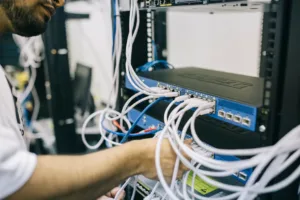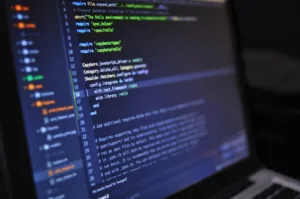
A critical security vulnerability affecting multiple H3C Magic series routers has been identified, allowing remote attackers to execute arbitrary commands through crafted HTTP POST requests. Tracked as CVE-2025-2732, this command injection flaw in the /api/wizard/getWifiNeighbour endpoint poses significant risks to network security with its 8.8 CVSS score (High severity). Security teams should immediately assess their exposure to this vulnerability while awaiting vendor patches.
Executive Summary for Security Leadership
The vulnerability impacts several H3C Magic router models including NX15, NX30 Pro, NX400, R3010, and BE18000 running firmware versions up to V100R014. As an unauthenticated remote command injection flaw, it enables attackers to execute arbitrary system commands through network-accessible HTTP POST requests. With public exploit details available and no current vendor response, organizations should prioritize isolating affected devices and monitoring for exploitation attempts.
Technical Analysis of the Vulnerability
The security flaw resides in the HTTP POST request handler component of affected routers, specifically in the /api/wizard/getWifiNeighbour endpoint. Improper input validation allows command injection through crafted requests, classified under CWE-77 (Command Injection) and CWE-74 (Injection). The vulnerability’s CVSS v3.1 scoring reflects its network-based attack vector with low complexity and no required user interaction, potentially leading to complete system compromise.
Affected Products and Versions
| Model | Affected Firmware Versions |
|---|---|
| Magic NX15 | ≤ V100R014 |
| Magic NX30 Pro | ≤ V100R014 |
| Magic NX400 | ≤ V100R014 |
| Magic R3010 | ≤ V100R014 |
| Magic BE18000 | ≤ V100R014 |
Detection and Mitigation Strategies
Security teams should monitor network traffic for HTTP POST requests to the vulnerable endpoint containing suspicious parameters, along with unexpected command execution patterns in router logs. Recommended immediate actions include network segmentation of affected devices, strict egress filtering, and comprehensive review of devices for signs of exploitation. While awaiting vendor patches, organizations should consider disabling the vulnerable functionality if not required for operations.
Indicators of Compromise
- Unusual HTTP POST requests to
/api/wizard/getWifiNeighbour - Unexpected system command execution in router logs
- Unauthorized configuration changes to router settings
Security Team Relevance and Response
For red teams, this vulnerability provides a potential network entry point and persistence mechanism, while blue teams should implement WAF rules to block suspicious requests to the affected endpoint. Threat intelligence professionals should monitor for exploitation attempts and underground forum discussions about this vulnerability. The lack of vendor response combined with public exploit details makes this a high-priority issue for all security teams.
Broader Security Implications
CVE-2025-2732 highlights the ongoing risks associated with network infrastructure vulnerabilities, particularly in consumer-grade devices used in enterprise environments. This incident reinforces the importance of regular firmware updates, network segmentation, and comprehensive monitoring of network device activity. Organizations should review their vulnerability management processes for network infrastructure components, especially those that may not receive automatic security updates.






